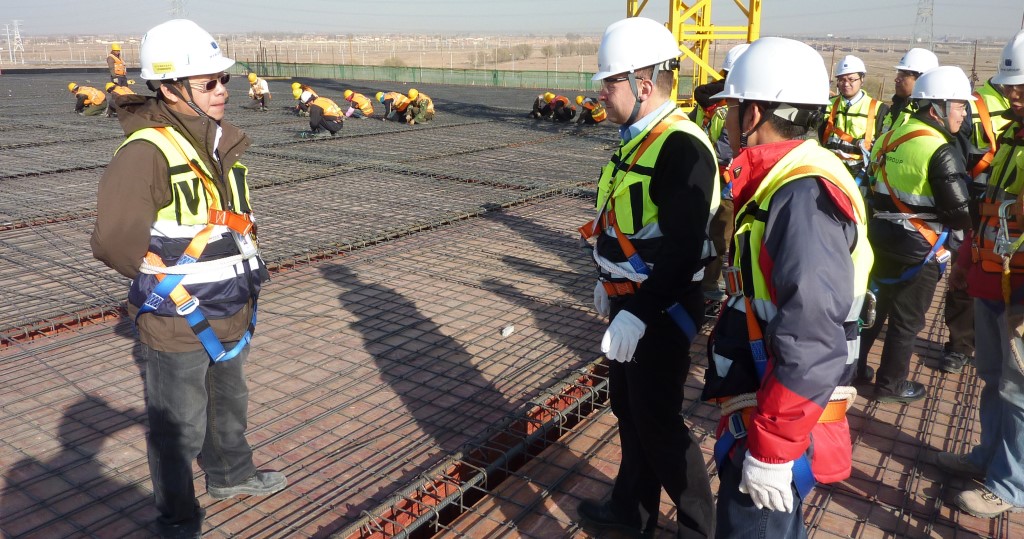The main responsibilities of a Joint Health and Safety Committee (JHSC) include:
- Inspecting your workplace on a regular basis
- Identifying potential and actual workplace hazards
- Getting information from your employer that relates to health and safety in your workplace
- Giving health and safety improvement recommendations in your workplace
- Being consulted about any health and safety-related testing in your workplace
- Having a member representing workers present at the beginning of any health and safety-related testing in your workplace
Click on the following links to learn more about Joint Health and Safety Committees.
- Other functions of a JHSC
- What Is a Joint Health and Safety Committee?
- What Workplaces Need a Joint Health and Safety Committee?
- Examples of Joint Health and Safety Committee Structures
- Joint Health and Safety Committee Training
If you need to take Joint Health and Safety Committee training, check out our course calendar for upcoming dates.

Learn More about a Joint Health and Safety Committee
Other functions of a JHSC
In addition to the main responsibilities listed above, the Joint Health and Safety Committee will also:
- Make themselves available to listen to and receive worker concerns, complaints, and recommendations
- Be open to discuss issues and recommend solutions
- Give input into existing and proposed workplace health and safety programs
- Be consulted in specified circumstances by the employer such as during the development of health and safety policies and programs including training programs.
- Be consulted and make recommendations in assessments of likely worker exposures to designated substances in the workplace

Joint health and safety committees will receive worker concerns, complaints, and recommendations
What Is a Joint Health and Safety Committee?
A joint health and safety committee is a group of people that represents both the workers and the employer and are mutually committed to improving the health and safety of their workplace. Together they identify potential health and safety issues in the workplace and bring those issues to the attention of the employer.
In addition, the employer needs to keep the JHSC informed about health and safety developments in the workplace. An appointed worker member of the JHSC is responsible for inspecting the workplace at least once every month.

A member of the JHSC is responsible for inspecting the workplace once every month
What Workplaces Need a Joint Health and Safety Committee?
If your workplace meets any of the following conditions, then you are required by law to have a joint health and safety committee:
- You regularly employ 20 or more workers. (You don’t include workers who take part in community participation (workfare) under Ontario Works Act, 1977 in your count)
- You have a construction project with 20 or more workers that are going to last 3 months or more.
- Your workplace has a designated substances regulation that applies to it, even if you are regularly employing less than 20 workers.
- Your workplace has a Director’s order issued to it under section 33 of the Ontario Works Act, even if you are regularly employing less than 20 workers.
- Your workplace or construction project has been ordered by the Ministry of Labour, Immigration, Training and Skills Development to establish a JHSC committee.
- You have a farming operation that regularly employs 20 or more workers who have duties related to mushroom, greenhouse, dairy, hog, cattle, or poultry farming.

You need a JHSC if your farming operation regularly employs 20 or more workers who have duties related to dairy
Examples of Joint Health and Safety Committee Structures
Here is a breakdown of the structure of your JHSC according to the number of employees that you have:
Workplaces with 1 to 5 regular employees:
You don’t need to have a JHSC. However, if you have a designated substance regulation that applies to your workplace, then you are required to have one.
Workplaces with 6 to 19 regular employees:
You need to have one health and safety representative that has been selected by the workers that they are representing. If you have a designated substance regulation that applies to your workplace, then you are required to have a joint health and safety committee.
Workplaces with 20 to 49 regular employees:
If your workplace has less than 50 workers regularly employed, then you need to have a minimum of 2 members. One member representing workers and the other from the employer.
Workplaces with more than 50 regular employees:
If your workplace has more than 50 regularly employed workers, then you need to have a JHSC that is composed of at least 4 members.

The number of employees will determine the size of your JHSC
Joint Health and Safety Committee Training
According to the Occupational Health and Safety Act (OHSA), at least two members of the joint health and safety committee (one representing workers and one representing persons who exercise managerial functions) need to be certified.
To get certified you need to complete Part 1 and Part 2 of mandatory training: Basic Certification and Workplace-Specific Hazard Training.
You will also need to take refresher training every three (3) years in order to maintain your certification. If you are a certified member, you may request a one-time exemption from taking Refresher Training. You need to be an active member, meaning you have been engaged as a member of your workplace JHSC during the last 12 months, in order to qualify for an exemption.
Refresher training includes:
- A review of key concepts from Part 1 and Part 2
- Relevant updates to legislation, standards, codes of practice, and occupational health and safety best practices
- An opportunity for certified members to share and discuss best practices and challenges.

You need to take refresher training every 3 years
Why Choose ACUTE?
If you need Joint Health and Safety training, contact ACUTE. Our training offers you the following benefits:
CPO Approved
ACUTE has been approved by the Chief Prevention Officer to deliver training to keep you safe and compliant with Ministry guidelines.
Experienced Trainers
All of our courses are led by highly trained instructors with over 100 years of combined learning experience.
Customized Learning
We can tailor your training to your company’s specific applications and policies.
Learn More Than Just Theories
ACUTE’s staff members have a wide range of on-site experience, so they are well equipped to answer all of your questions and share their first-hand expertise with you.
ACUTE offers Joint Health and Safety Committee training by a CPO approved trainer
More Reasons to Choose ACUTE
You can trust ACUTE for the best safety training possible. ACUTE’s experienced team members have been serving safety professionals for over 20 years. You can rely on ACUTE for hands-on, physically distanced, practical safety training to keep your employees safe in the workplace.
ACUTE is dedicated to workplace safety and understands the importance of course and training provider approval.
Why get workplace safety training with ACUTE? Here are just some of the benefits of working with ACUTE:
- Open Door Instructor-Student Partnership – ACUTE’s training services emphasize client participation. Staff foster relationships with clients and serve as a touchstone for advice anytime moving forward.
- Serving Your Team and Industry – With a vast array of clients in the manufacturing, construction, health, academic, and government sectors, ACUTE brings the best safety practices from across the spectrum to your workplace.
- Track Record of Success – ACUTE is rated 4.9/5 stars on Google reviews, demonstrating a commitment to our clients, quality, and passion for training.
What Our Customers Are Saying…
“I work at the University of Guelph as an arborist. Ron Campbell provided a small socially distanced group and myself with working at heights training. Ron has a wealth of knowledge and kept everyone engaged with many “real life” examples of working at heights scenarios and facts. We have also received elevated work platform training with Patrick from Acute training. Patrick is also a very friendly, knowledgeable and engaging professional trainer. I truly believe that the best trainers are those with practical experience and the trainers at Acute have that locked down.”


